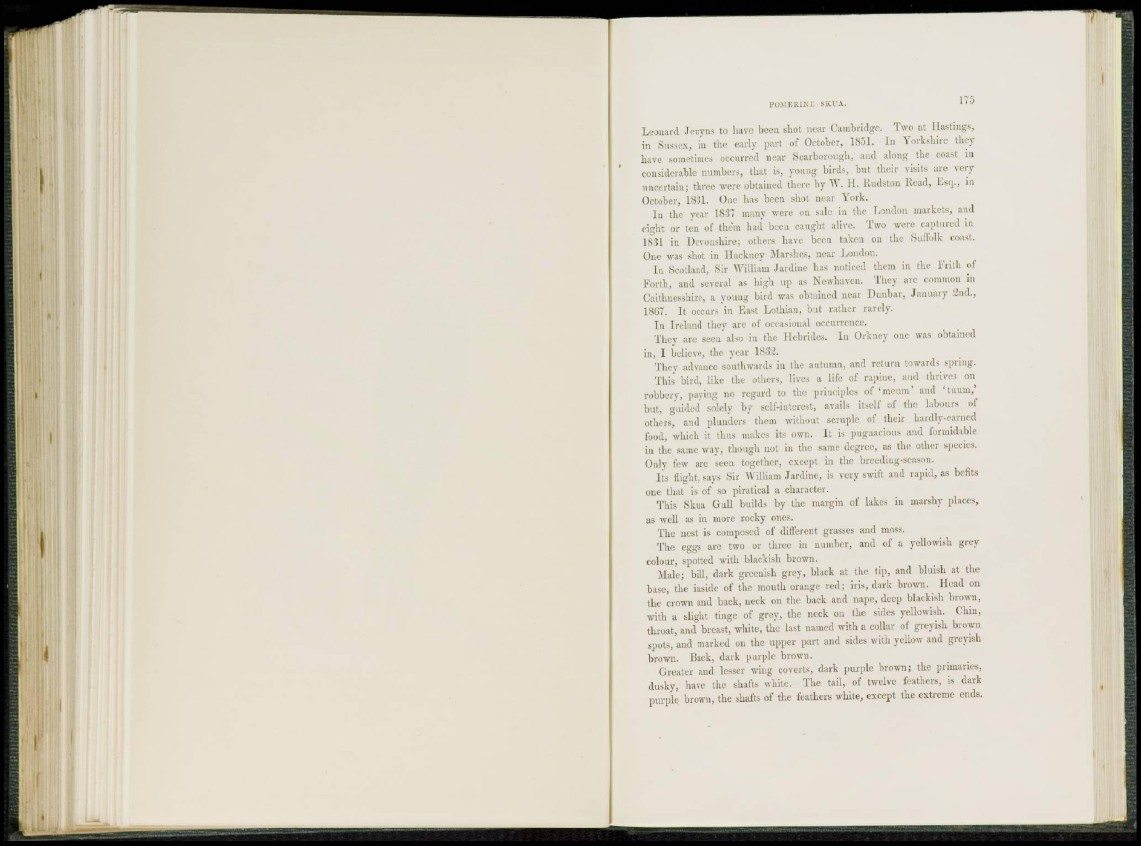
POMEBINE SKUA. 175
Leonard Jonyns to have been shot near Cambridge. Two at Hastings,
in S u s s e x , in the early pari of October, 1851. In Yorkshire they
have sometimes occurred near Scarborough, and along the coast in
considerable numbers, that is, young birds, but their visits are very
uncertain; three were obtained there by W. II. Rudston Head, Esq., in
October, 1881, Oac has been shot near York.
I n the year 1837 many wore on sale in the London markets, and
eight or ten of them had been caught alive. Two were captured in
1831 in Devonshire; others have been taken on the Suffolk coast.
One was shot in Hackney Marshes, near London.
I n Scotland, Sir William Jardine has noticed them in the Frith of
Forth, and several as high up as Newhaven. They are common in
Caithnesshire, a young bird was obtained near Dunbar, January 2nd.,
1807. It occurs in East Lothian, but rather rarely.
I n Ireland they are of occasional occurrence.
They arc seen also in the Hebrides. In Orkney one was obtained
in, 1 believe, the year 1832.
They advance southwards in the autumn, and return towards spring.
This bird, like the others, lives a life of rapine, and thrives on
robbery, paying no regard to the principles of ' m c u i n ' and 'tiuim,'
but, guided solely by self-interest, avails itself of the labours of
others, and plunders them without scruple of their hardly-earned
food, which it thus makes its own. It is pugnacious and formidable
in the same way, though not in the same degree, as the other species.
Only few arc seen together, except in the breeding-season.
Its flight, says S i r William Jardine, is very swift and rapid, as befits
one that is of so piratical a character.
This Skua Gull builds by the margin of lakes in marshy places,
as well as in more rocky ones.
The nest is composed of different grasses and moss.
The eggs are two or three in number, and of a yellowish grey
colour, spotted with blackish brown.
Male; bill, dark greenish grey, black at the tip, and bluish at the
base, the inside of the mouth orange red; iris, dark brown. Head on
the crown and back, neck on the back and nape, deep blackish brown,
with a slight tinge of grey, the neck on the sides yellowish. Chin,
throat, and breast, white, the last named with a collar of greyish brown
spots, and marked on the upper part and sides with yellow and greyish
brown. Hack, dark purple brown.
Greater and lesser wing coverts, dark purple brown; the primaries,
dusky, have the shafts white. The tail, of twelve feathers, is dark
purple brown, the shafts of the feathers white, except the extreme ends.